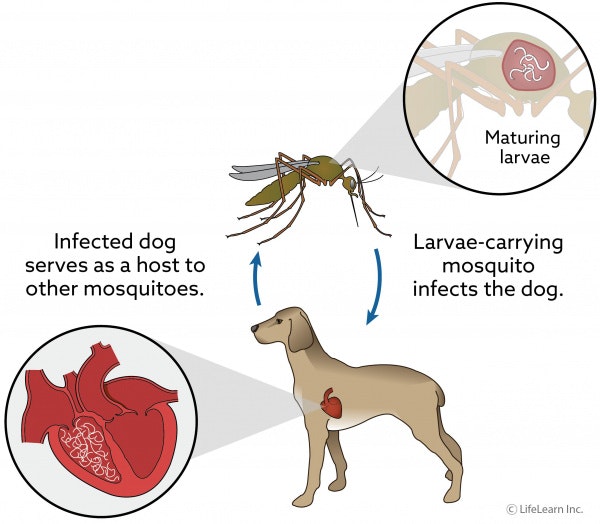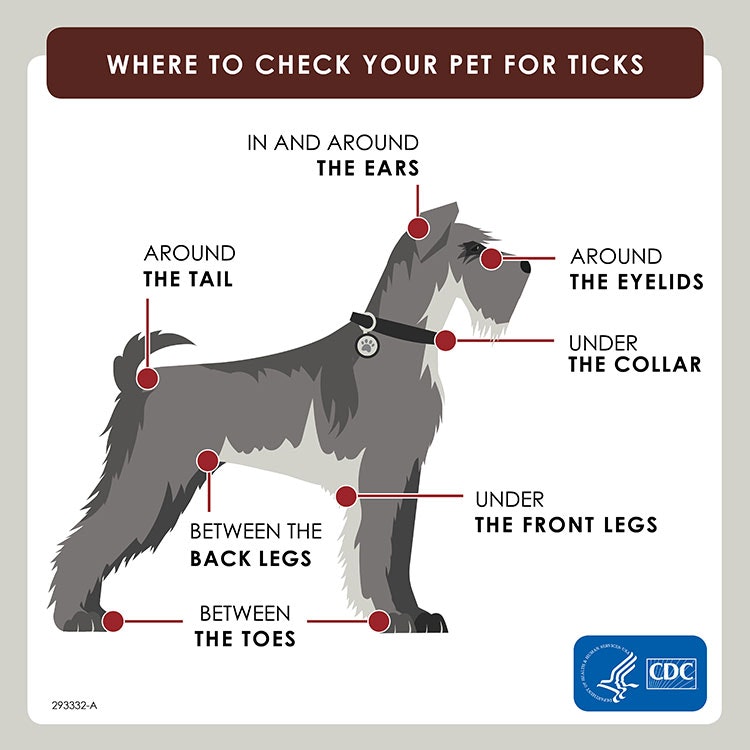Keep your pets safe from mosquitoes and ticks
Humans aren’t the only ones that can get diseases from mosquitoes and ticks—your pets can too! Pets are important members of your family and rely on you to help keep them happy and healthy. Here are a few ways you can protect your pets from diseases transmitted by mosquitoes and ticks.
Dog heartworm and mosquitoes
Heartworm is a potentially fatal condition caused by a roundworm (filarial nematode) that invades and occupies the canine heart and pulmonary arteries. Dogs and coyotes are most susceptible to infection, but occasionally cats and other mammals may also be affected. Once established, heartworm is difficult and expensive to treat. However, preventative treatments are available from your veterinarian.

Treehole mosquitoes (Aedes sierrensis) play an essential role in the transmission of heartworm. When these mosquitoes feeds on an animal infected with heartworm they pick up microscopic worms called microfilaria. They can then pass along the heartworms to the next susceptible animal that they bite. Treehole mosquitoes are present in Marin and Sonoma counties, so it is important that dogs in this area receive preventative treatment. Contact your veterinarian for more information.
Ways you can minimize treehole mosquitoes on your property:
- Inspect trees for holes, including holes as small as half an inch that lead to cavities that may hold water. Contact a licensed arborist to discuss measures to prevent water from accumulating in tree holes.
- Remove buckets, toys, tarps or other items holding water.
- Check your gutters for clogs and standing water.
- Contact the District for advice on reducing mosquito populations on your property.
- For temporary relief from treehole mosquitoes in your backyard, try using one or more oscillating fans pointed away from seating areas. Treehole mosquitoes are weak flyers and have difficulty moving against the wind generated by the fans.
Preventing ticks on your pets
Pets, especially those that spend time outdoors, are extremely susceptible to tick bites. They can also bring ticks indoors and increase your risk of being bitten. However, there are a number of things you can do to protect yourself and your pet from ticks:
- Talk to your veterinarian about preventative medications.
- Do not allow dogs to venture into tall grass.
- Create a tick-free yard through landscape design.
- Check your pets for ticks before allowing them indoors.
How to check your pets for ticks
Ticks can sometimes be difficult to see on your pet because of their size and color, especially if the animal has a thick, dark coat. Be sure to check your pet for ticks every day, especially after spending time outdoors. Start by running your fingers through their fur looking for small bumps.

Concentrate on the following areas where ticks are most likely to be found:
- In and around the ears
- Around the eyelids
- Under the collar
- Under the front legs
- Between the back legs
- Between the toes
- Around the tail
If you find an attached tick, use tweezers to grasp the tick as close to the skin as possible without grabbing any fur. Pull upward with steady, even pressure. Don’t twist or jerk the tick.
For more information regarding ticks, visit www.msmosquito.org/ticks
